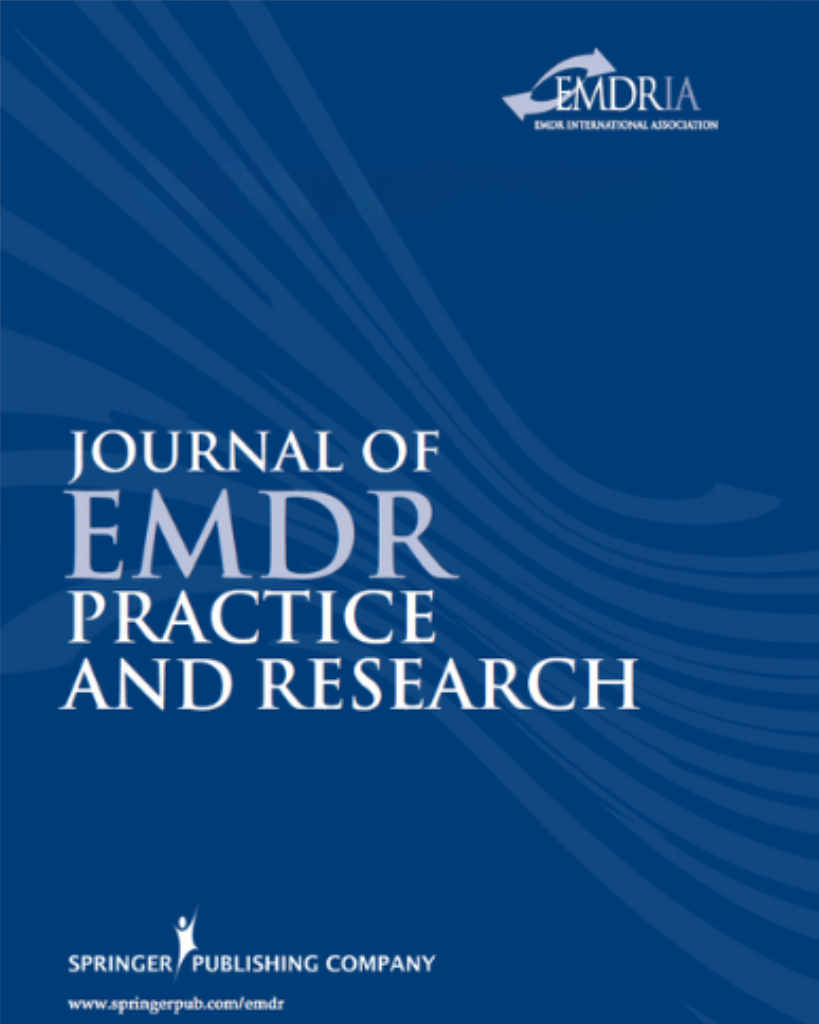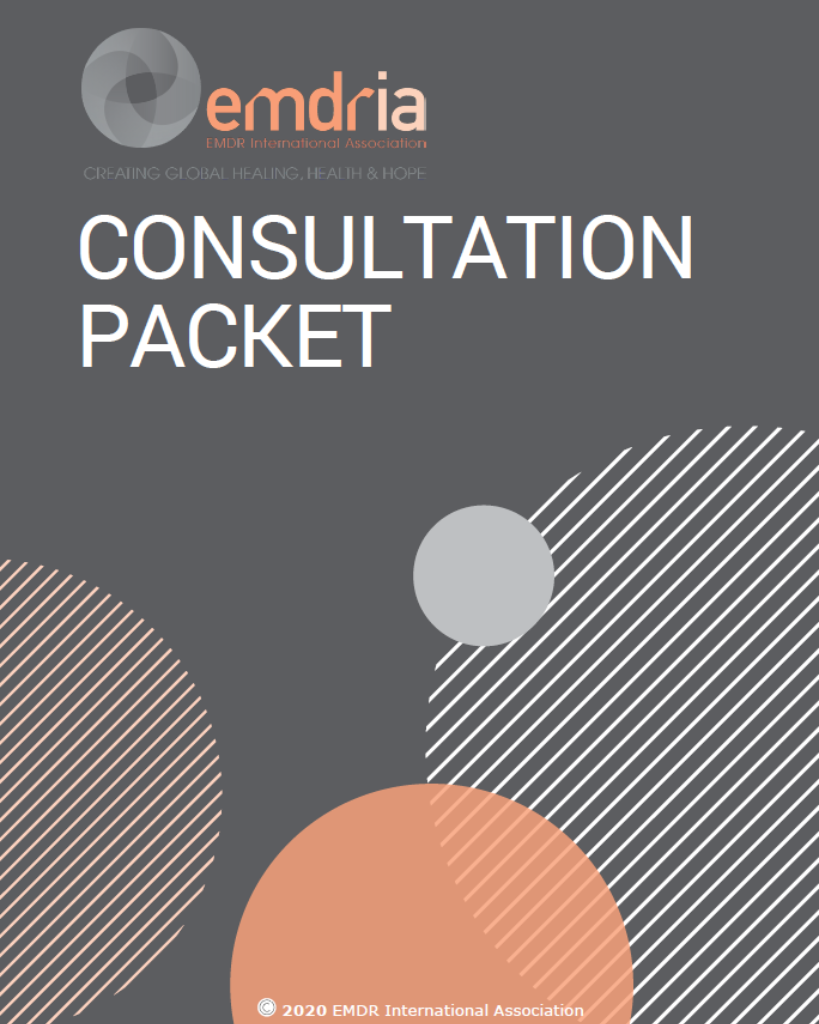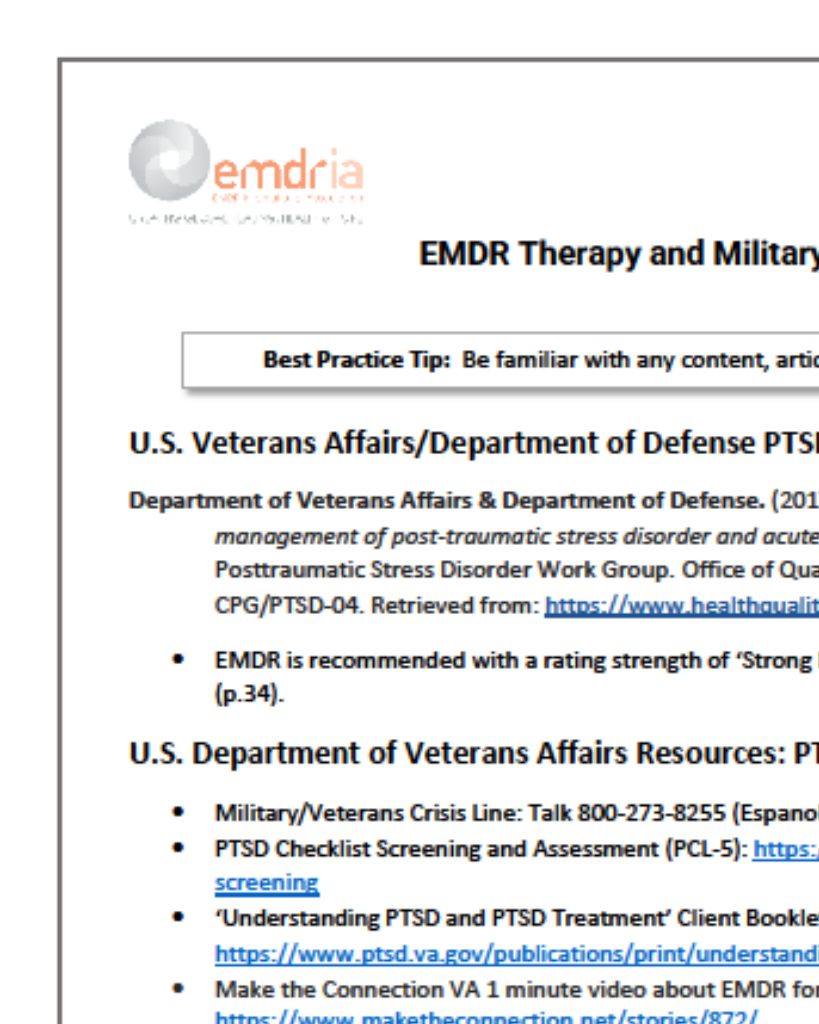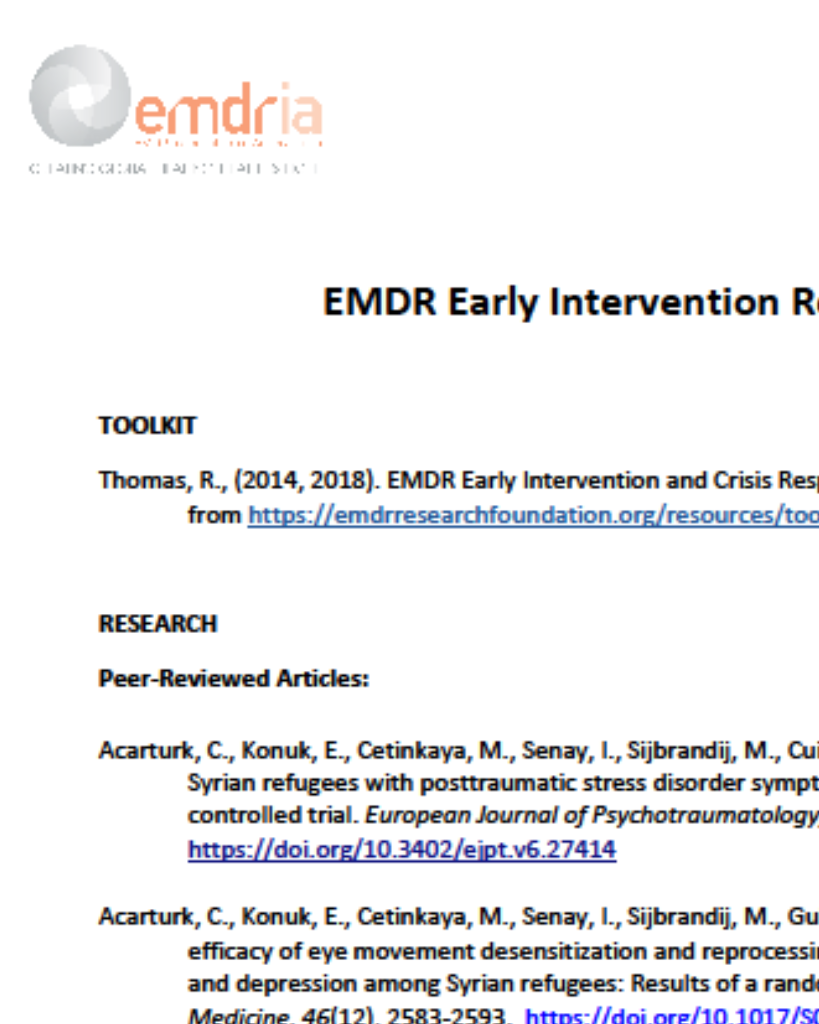Two Method Approach: A Case Conceptualization Model in the Context of EMDR
Comprehensive model to identify crucial target memories for EMDR treatment: “Two Method Approach” used for conceptualization & implementation.
Article Abstract
“This article outlines a comprehensive model that helps to identify crucial target memories for EMDR treatment. The “Two Method Approach” can be used for conceptualization and treatment implementation for a broad spectrum of symptoms and problems, other than those related to PTSD per se. The model consists of two types of case conceptualizations. The First Method deals with symptoms whereby memories of the etiological and/or aggravating events can be meaningfully specified on a time line. It is primarily aimed at the conceptualization and treatment of DSM-IV-TR Axis I disorders. The Second Method is used to identify memories that underlie patients’ so-called dysfunctional core beliefs. This method is primarily used to treat more severe forms of pathology, such as severe social phobia, complex PTSD, and/or personality disorders. The two methods of case conceptualization are explained step by step in detail and are illustrated by case examples.”
—Description from publisher
Article Access
Open Access
de Jongh, A., ten Broeke, E., & Meijer, S. (2010). Two Method Approach: A Case Conceptualization Model in the Context of EMDR. Journal of EMDR Practice and Research, 4(1), 12–21. https://doi.org/10.1891/1933-3196.4.1.12
About the Journal
The Journal of EMDR Practice and Research is a peer-reviewed publication devoted to integrative, state-of-the-art papers about Eye Movement Desensitization and Reprocessing. It is a broadly conceived interdisciplinary journal that stimulates and communicates research and theory about EMDR, and their application to clinical practice. The Journal of EMDR Practice and Research is the Official Publication of the EMDR International Association.
Date
February 1, 2010
Creator(s)
Ad de Jongh, Erik ten Broeke, Steven Meijer
Topics
Anxiety/Panic/Phobias, Personality Disorders, PTSD
Extent
10 pages
Publisher
Springer Publishing Company
Rights
Copyright © 2010 EMDR International Association
APA Citation
de Jongh, A., ten Broeke, E., & Meijer, S. (2010). Two Method Approach: A Case Conceptualization Model in the Context of EMDR. Journal of EMDR Practice and Research, 4(1), 12–21. https://doi.org/10.1891/1933-3196.4.1.12
Series
4
Installment
1
Audience
EMDR Therapists
Language
English
Content Type
Peer-Reviewed
Original Source
Journal of EMDR Practice and Research
Access Type
Open Access





